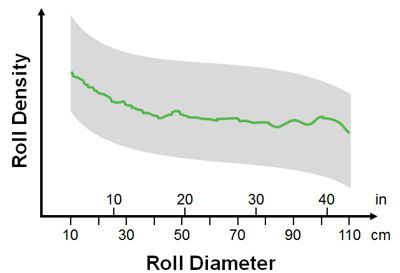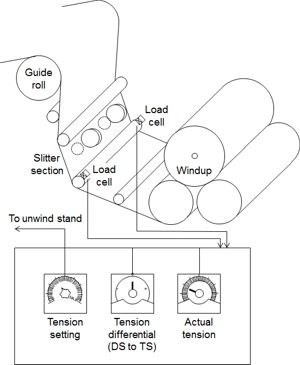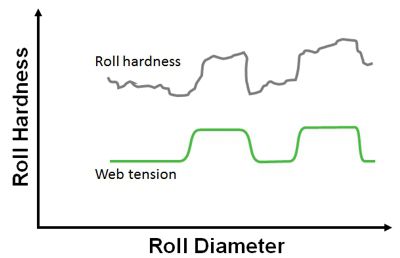Winding principles part 1 - TNT overview, effect of web tension
This article is the first in a short series which will explain how web tension, rider roll pressure, and drum torque ratio affect roll quality. Illustrations of key components and control principles will be presented. First there will be an overview, then each of the control variables (tension, nipload & torque) will be discussed.
Overview
In order to stand up to shipping, storing, and handling, and to run well on printing presses and converting machines, paper rolls must be wound with uniform or diminishing hardness from the core to the outside of the rolls. In addition, the rolls must be separated from each other during winding so that they don't become interwoven together.
There are some practical limits to the level of hardness present in any roll. Rolls must be hard enough to avoid loose cores, "baggy socks" rolls, out of round rolls, and other problems associated with lack of hardness. On the other hand, rolls must not be wound hard enough to cause telescoping or dishing of the ends, or any type of shear bursts or roping.

Figure 1 Roll density (hardness) should remain steady or decrease as roll diameter increases, staying within an operating envelope of optimal hardness.
For any given grade and weight of paper, there is an optimum range of hardness that will yield high quality rolls capable of running properly on customer equipment and withstanding the forces of shipping, storing, and handling. The specific amount of hardness desired for any given roll may vary according to customer needs. But the requirement of uniform or diminishing hardness will remain the same. The roll should never be harder on the outside than it is near the core; instead the hardness must remain uniform or diminish slightly from the core toward the outside of the roll.
Factors affecting hardness
Web tension, rider roll pressure and drum torque ratio all can influence the hardness of rolls wound on the winder. Web tension also influences the amount of roll separation.
As a general rule, roll hardness should be controlled mostly by the drum torque ratio rather than by web tension or rider roll pressure. Before making any changes in web tension, rider roll pressure or drum torque ratios, consider the following discussions of the TNTs of winding (tension, nipload & torque).
Web tension

Figure 2 Example of tension control on a winder
Valmet's technical studies have found that changes in web tension can create unwanted changes in roll hardness. While it's true in general that greater tension leads to harder rolls, the relationship between tension and roll hardness is very complex. Moreover, web tension has its greatest impact between the unwind and the rear drum nip. As a result, it has a far greater influence on roll separation and runnability than it does on roll hardness. (Separation is achieved before the rear drum nip, but roll hardness is determined primarily by what happens after the rear drum nip.)

Figure 3 Effect of web tension on roll hardness
If web tension is changed in an attempt to influence roll hardness, the change may cause problems with roll separation (due to lack of tension) or with stretched, inelastic paper (due to excessive tension). Changes in tension may also lead to unwanted changes in roll structure.
For these reasons, web tension should be maintained at a constant level at all times. The level should be no higher than necessary for good roll separation. The following table shows tension levels that have been found suitable for various grades of paper.
| Grade | Tension level |
| Fine Papers (20 lb/1000 ft2) | 2.5-3.5 pli |
| Bag Papers (45 lb/1000 ft2) | 5.0-8.0 pli |
| Liner Board (90 lb/1000 ft2) | 6.0-10.0 pli |
| Pulp (300-600 lb/2880 ft2) | 4.0-18.0 pli |
This article series will continue with a discussion of rider roll load and drum torque and their effect on roll hardness. For more information on winding principles and how to wind a perfect roll, contact your Valmet representative.